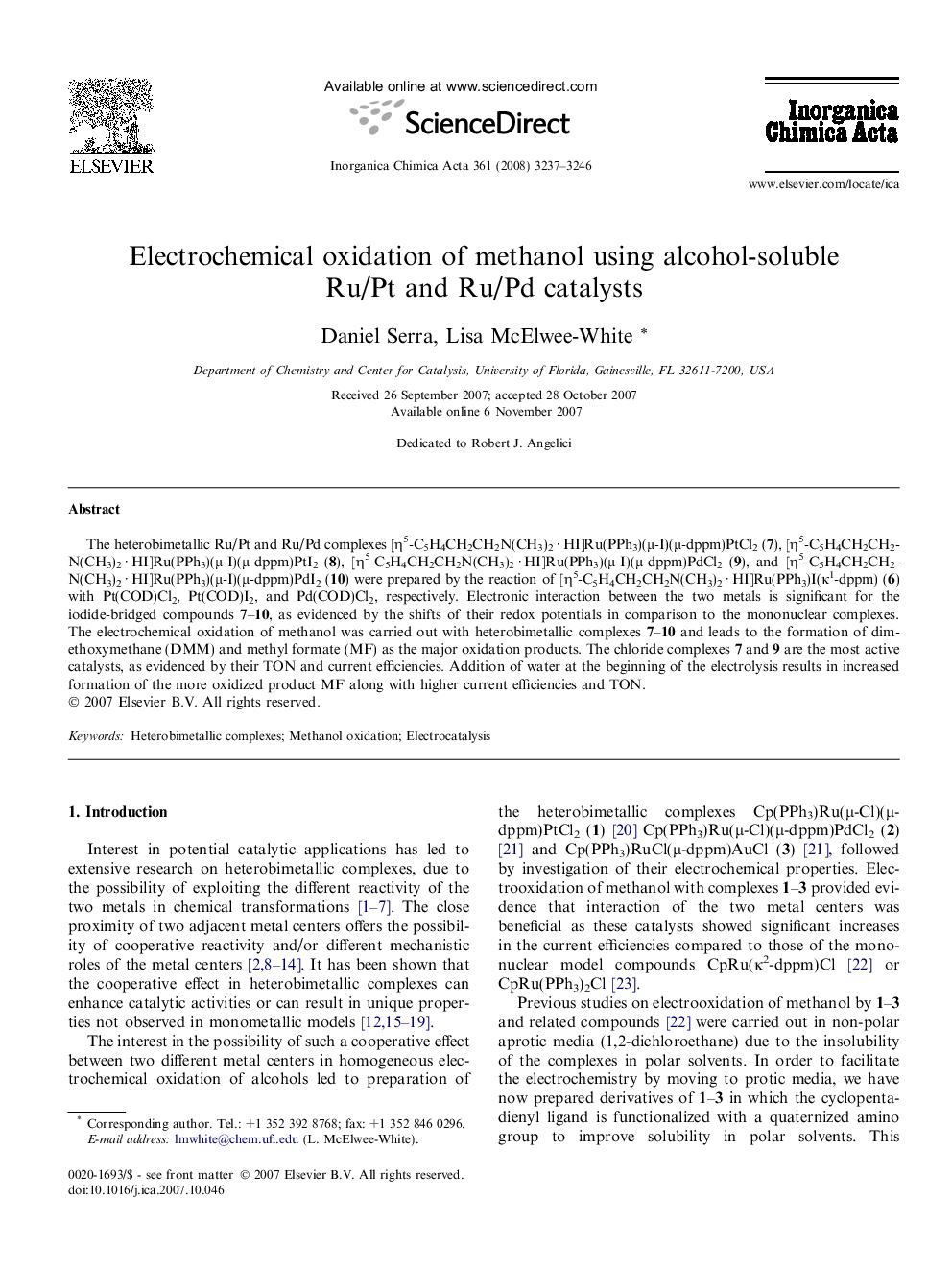| Article ID | Journal | Published Year | Pages | File Type |
|---|---|---|---|---|
| 1311599 | Inorganica Chimica Acta | 2008 | 10 Pages |
The heterobimetallic Ru/Pt and Ru/Pd complexes [η5-C5H4CH2CH2N(CH3)2 · HI]Ru(PPh3)(μ-I)(μ-dppm)PtCl2 (7), [η5-C5H4CH2CH2N(CH3)2 · HI]Ru(PPh3)(μ-I)(μ-dppm)PtI2 (8), [η5-C5H4CH2CH2N(CH3)2 · HI]Ru(PPh3)(μ-I)(μ-dppm)PdCl2 (9), and [η5-C5H4CH2CH2N(CH3)2 · HI]Ru(PPh3)(μ-I)(μ-dppm)PdI2 (10) were prepared by the reaction of [η5-C5H4CH2CH2N(CH3)2 · HI]Ru(PPh3)I(κ1-dppm) (6) with Pt(COD)Cl2, Pt(COD)I2, and Pd(COD)Cl2, respectively. Electronic interaction between the two metals is significant for the iodide-bridged compounds 7–10, as evidenced by the shifts of their redox potentials in comparison to the mononuclear complexes. The electrochemical oxidation of methanol was carried out with heterobimetallic complexes 7–10 and leads to the formation of dimethoxymethane (DMM) and methyl formate (MF) as the major oxidation products. The chloride complexes 7 and 9 are the most active catalysts, as evidenced by their TON and current efficiencies. Addition of water at the beginning of the electrolysis results in increased formation of the more oxidized product MF along with higher current efficiencies and TON.
Graphical abstractThe alcohol-soluble heterobimetallic Ru/Pt, and Ru/Pd complexes [η5-C5H4CH2CH2N(CH3)2 · HI]Ru(PPh3)(μ-I)(μ-dppm)MX2 (M = Pt, Pd; X = Cl, I) have been synthesized and characterized. When X = Cl, the results show high current efficiencies and TON for the electrochemical oxidation of methanol when the electrolysis is performed in pure methanol.Figure optionsDownload full-size imageDownload as PowerPoint slide
